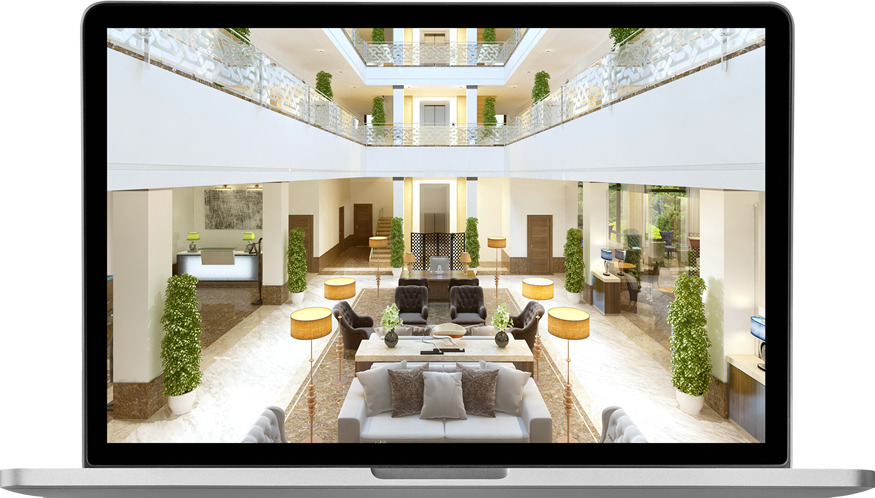Websites collect a huge amount of data on traffic, behavior, and select demographic information. Often times, much of this data is irrelevant to your goals and can serve as a distraction. Setting up a dashboard for your hotel website is an easy and efficient way to monitor key performance indicators and important site stats on the fly, without the noise. By defining which metrics are important to your website and then tracking them on a consistent basis, you can hone your focus on predefined goals.
Another benefit is ease of access to reports. A dashboard can allow a one-page snapshot of the main performance goals and eliminates the need for accessing information in many disjointed places within the Google Analytics reporting suite.
Follow along for a detailed explanation of how Google Analytics Dashboards work and how to set them up for your property.
Establishing Goals
Every website should have a set of performance metrics for which it is optimized. In the hospitality industry, these key performance indicators (KPIs) typically include, at a minimum:
- Traffic Source and Medium – metrics measuring how many people are visiting a site and which online medium (search, paid ads, social media, other website referrals) traffic is coming from.
- Bounce Rate – the percentage of site visitors that bounce off a page without interacting with any site content. It is a quintessential measure of on-page engagement, and bounce rates should be as low as possible for those in the hospitality industry.
- Check Rate Conversions – how many people visited the reservation system from the site. This is separate from eCommerce conversions and is a more reliable indicator of site content since it does not account for drop-offs due to availability or price of rooms.
- Special Offer Clicks – a good way to evaluate interest in and effectiveness of special offers.
- Requests for Proposal Submissions – measures the number of people who completed the RFP form.
- Clicks to Call – measurement of the number of people who clicked on a phone hyperlink to call the property.
Your hotel website may have additional key performance indicators based on your property’s unique goal set. Other recommended items to track to add include menu views, measured by PDF clicks, dining reservations, gift card purchases, newsletter signups, and individual room type clicks. Mobile behavior reports are another wise choice given the rise in mobile site visitors in the hospitality industry.
Tracking Goals
Once you have decided on which site metrics you would like to track, you must set up an event tracking code or a destination goal sending users to a page. Goal tracking can be implemented in a variety of ways, depending on your site structure and goal prioritization. Some metrics, such as Traffic Source/Medium and Bounce Rate, are tracked automatically. Others, such as Clicks to Call and Check Rate, must be created. The best guide for creating and implementing goal tracking is from Google itself.
Creating the Dashboard
Google Analytics provides a user-friendly interface and a straightforward implementation procedure for custom dashboards. To access this section, go to Google Analytics > Customization > Dashboards. To set up a dashboard, click the CREATE button. Once there, you will have three options:
- Blank Dashboard – allows for full customization.
- Starter Dashboard – includes preset metrics with the ability to add or remove widgets.
- Import from Gallery – the gallery is a collection of peer-shared dashboard templates that can be downloaded and connected to your analytics account.
A starter dashboard or an imported dashboard from the gallery are good options for those who have not set up Google Analytics tracking goals, but they will likely provide extra information might not be relevant. A blank dashboard allows full customization and is the best place to start if you know exactly which goals you would like to track.
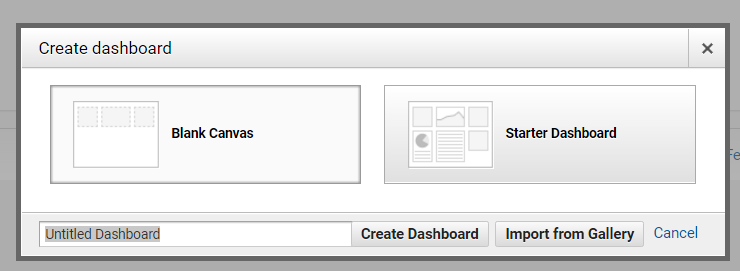
Once you have created your dashboard, add widgets containing the KPIs you want to monitor. To add a widget, select the add widget button.
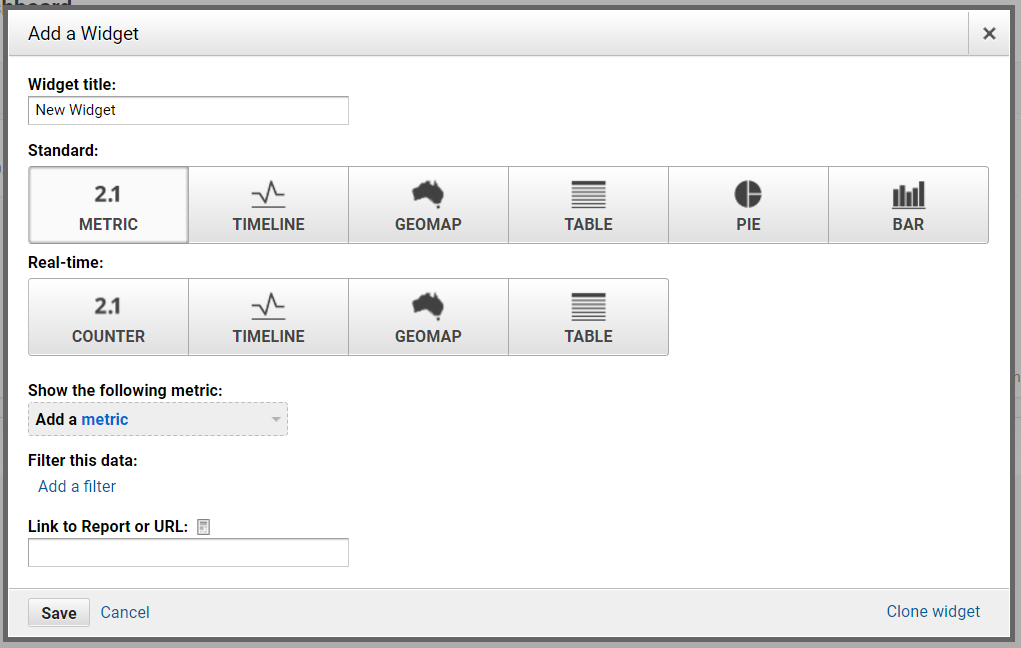
Then choose a name and search for the metric that needs to be represented. The Google Analytics search function is comprehensive and will contain every possible measurement, including custom goals.
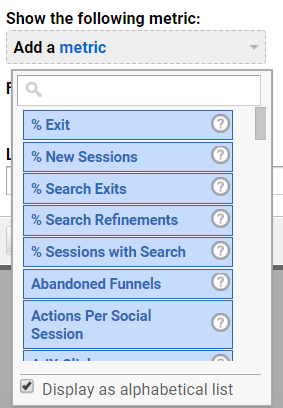
Next, rinse and repeat for all other KPIs. Once completed, further segments can easily be added to all widgets through the top bar, and dates can be adjusted and compared on the top right.

A finished dashboard can look like this:
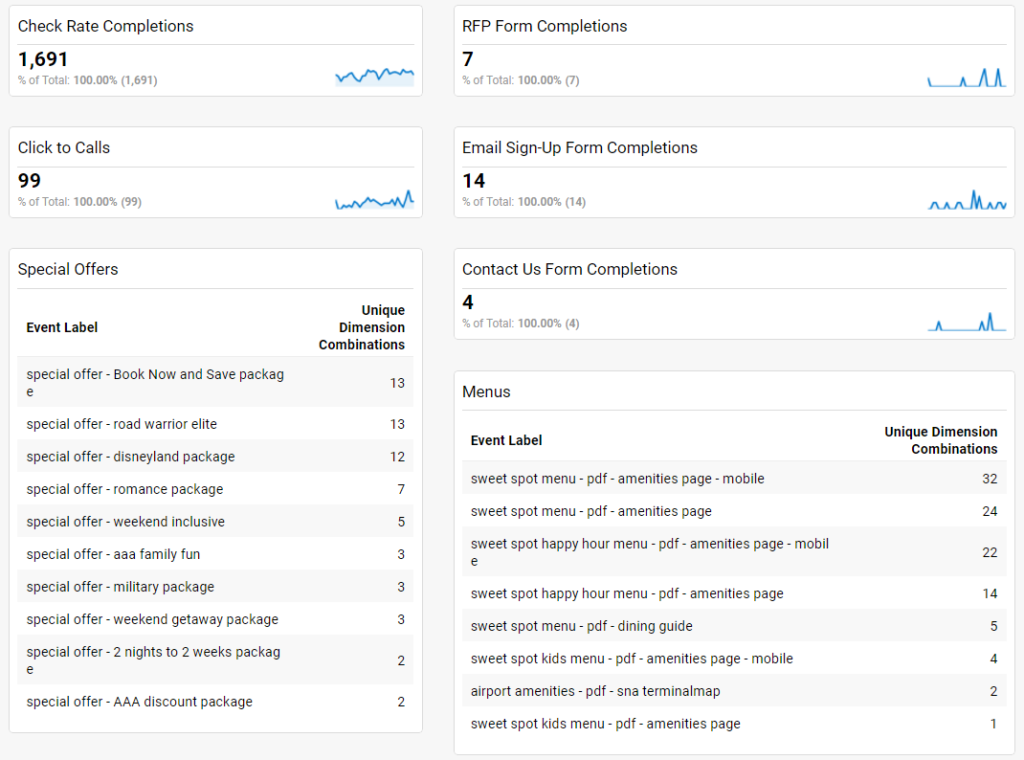
…or this:
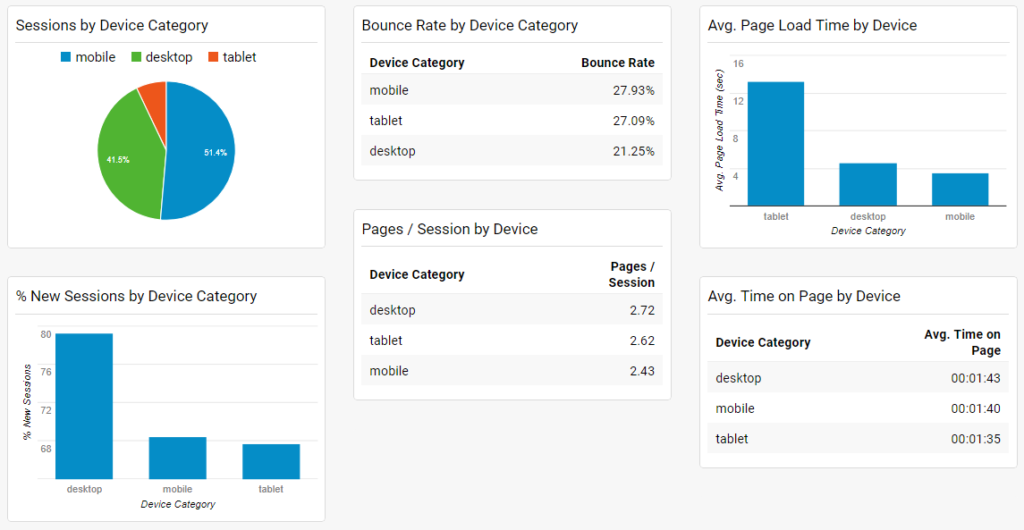
…or even this:
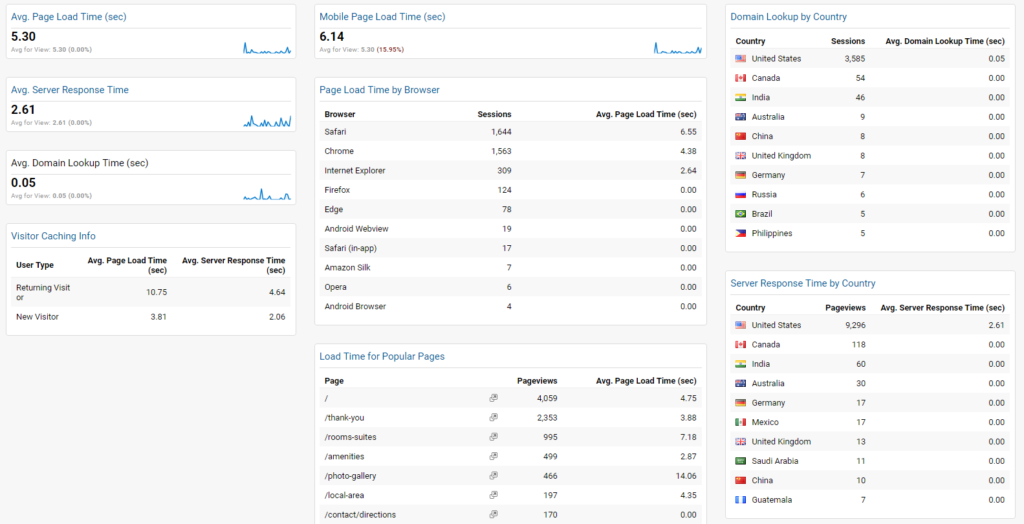
Depending on what is most important for your hotel.
Conclusion
Though initially time-intensive, a properly configured Google Analytics dashboard will keep you informed on the fly once complete. Defining goals and creating processes to measure them are two crucial aspects of digital marketing, and dashboards are an easy way to access this information efficiently. From here, you can chart out strengths and weaknesses and monitor trends to look for opportunities. Questions about this process or need help getting started?
Blue Magnet Interactive is your hospitality reporting expert with more than 10 years of experience. Get in touch to learn more!




